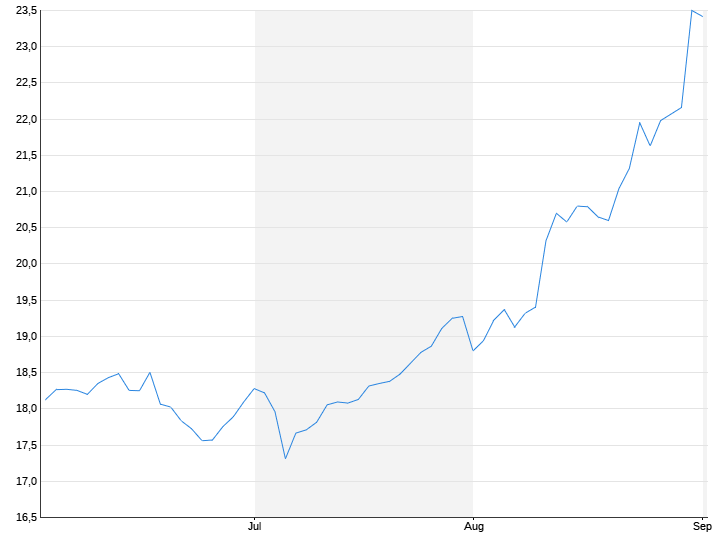Switzerland business is integrated
UBS is burying Credit Suisse and cutting 3,000 jobs
08/31/2023, 11:05 am
End for the traditional company: Contrary to the hopes of politics and society, UBS also incorporated the Swiss business of Credit Suisse. Many employees lose their jobs. UBS itself has benefited greatly from the takeover, which has been ongoing since March.
UBS CEO Sergio Ermotti is taking the most far-reaching step since the emergency takeover of Credit Suisse (CS) in March: the institute also integrates the Swiss business of the smaller bank, which will then disappear completely as an independent institute, as UBS announced in the morning. “Full integration is the best solution for UBS, our stakeholders and the Swiss economy,” Ermotti said in the statement. Politicians and the general Swiss public had hoped for a spin-off from CS Switzerland, for example via an IPO, to ensure competition and avoid a concentration of risk for the small country.
In the course of the takeover of CS, UBS will cut around 3,000 jobs. Around 1,000 of these were due to the integration of Credit Suisse’s Swiss business into UBS, Ermotti explained. In addition, the need to fundamentally restructure other parts of Credit Suisse will lead to around 2,000 further job cuts in Switzerland. These measures would be implemented over the coming years. Most of the cost reductions are achieved through natural turnover, retirements and internal transfers of staff. Ermotti did not provide any information on measures in other parts of the world.
The Swiss Bank Staff Association (SBPV) meanwhile called for equal treatment of employees when the Swiss units of UBS and CS were merged. “Credit Suisse is disappearing, people aren’t,” the association said. “The SBPV demands that the 37,000 employees of the two institutes in Switzerland be treated fairly and equally in the integration process.”
Value increase effect of around twelve billion dollars
Meanwhile, UBS raised the savings target. By the end of 2026, the group wants to reduce gross costs by over ten billion dollars. So far, the world’s second largest asset manager for wealthy private customers had targeted over eight billion dollars. “Since we announced the completion of the Credit Suisse acquisition two and a half months ago, we have been working flat out to implement the largest and most complex banking merger in history to the benefit of all stakeholders,” said Ermotti.
The integration-related expenses are likely to be largely offset by value-added effects of around twelve billion dollars. Employees are the largest cost pool at banks. At mid-year, the merged group employed 119,100 people; at the end of the first quarter, UBS and CS still had a total of around 122,000 employees.
The first major digital bank run in history forced the Swiss government to act in March. She orchestrated a takeover of Credit Suisse by UBS practically overnight. Although this could break the peak of the massive outflows of customer funds. Nevertheless, customers withdrew another CHF 39.2 billion from Credit Suisse in the quarter. The bottom line was a net loss of CHF 9.3 billion in the second quarter.
Future of the Credit Suisse brand still open
UBS representatives indicated that Credit Suisse would have had a difficult time in the home market in the future. In the end, full integration was the only option. “The two Swiss units will be managed separately until the legal integration planned for 2024,” explained Ermotti. What will happen to the Credit Suisse brand in Switzerland has not yet been finally clarified.
In view of the comparatively high and stable profits, CS Switzerland was considered the crown jewel of Credit Suisse, with analysts estimating the value at up to 16 billion francs. UBS bought all of Credit Suisse for only three billion Swiss francs and thus a fraction of the equity. The corresponding book profit (“badwill”) from the transaction ensured that the group brought in a record profit of 29 (previous year’s period 2.1) billion dollars in the second quarter.
The core business with millionaires and billionaires, meanwhile, was doing surprisingly well; in the so-called Global Wealth Management, UBS collected 16 billion francs in new money, the best value in a second quarter in over ten years. In July and August, the combined wealth management business of UBS and CS raised $8 billion.
Experts had previously expected that the Credit Suisse integration could also affect its own business. In such cases, employees often care more about securing their own position than about the customers. Rich and super-rich who had accounts with both institutions in the past could also be tempted to broaden their banking relationships again.
UBS shares soaring
But CEO Ermotti, who was brought back to UBS specifically for the Credit Suisse integration, is on a roll. The mammoth project has been going according to plan so far, and he was able to tick off several important legal cases at the same time. The greatest success was probably the recent waiver of a state safety net with a total volume of up to 209 billion francs. The bank has thus gained a great deal of freedom of action in relation to politicians.
This probably made it easier for Ermotti to bury Credit Suisse, founded in 1856 by entrepreneur Alfred Escher. At the same time, investors appreciate that UBS has the risks associated with Credit Suisse under control and therefore no longer needs the state guarantees. UBS shares are up 30% since the acquisition was announced and are just below their highest level since 2008.
For the current quarter, the group expects an adjusted pre-tax result around the breakeven point, in the entire second half of the year an adjusted pre-tax profit should then be generated. By the end of 2026, UBS is aiming for a cost/income ratio of less than 70 percent (Q2: 88.9 percent) and a return on Common Equity Tier 1 capital of 15 percent.
